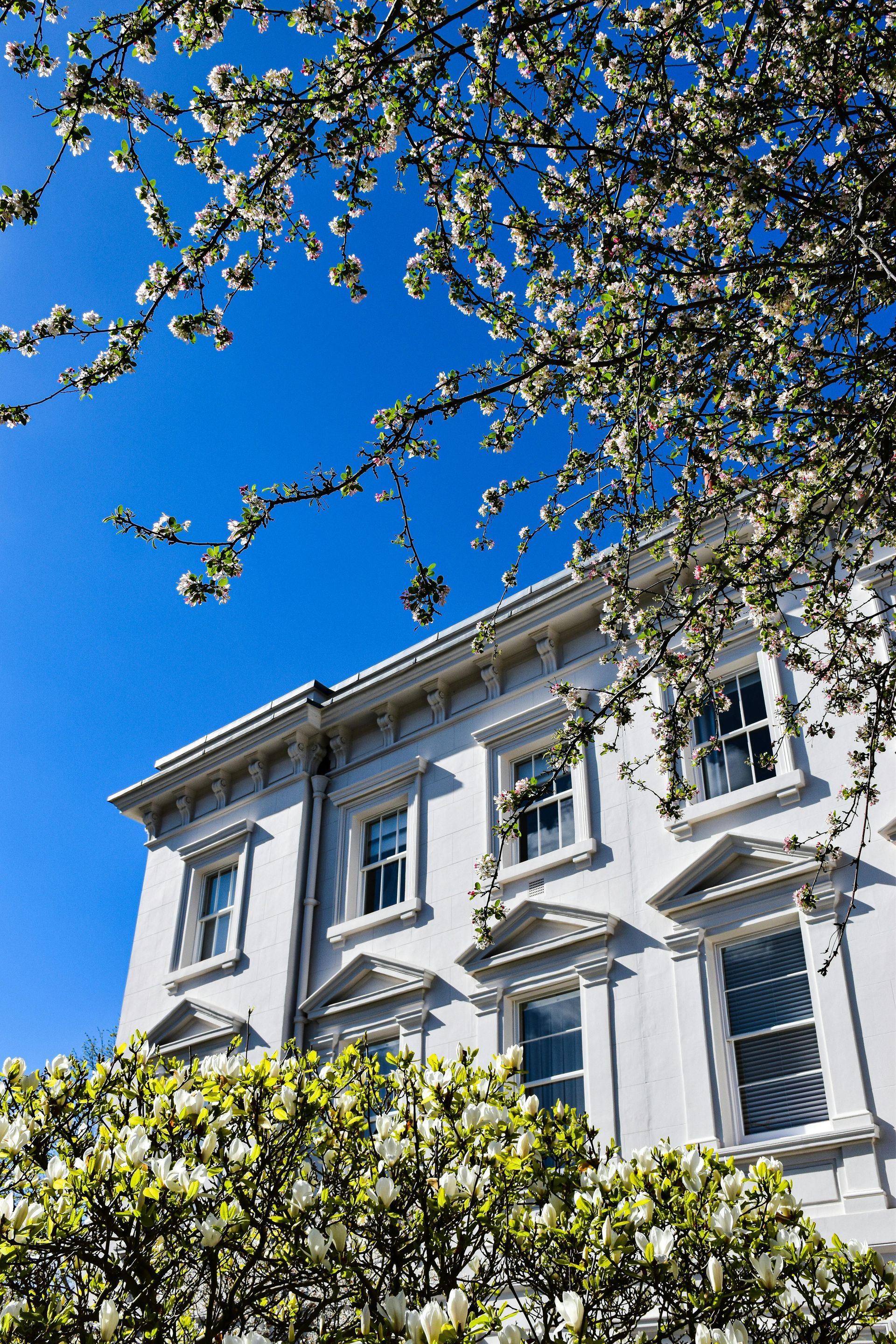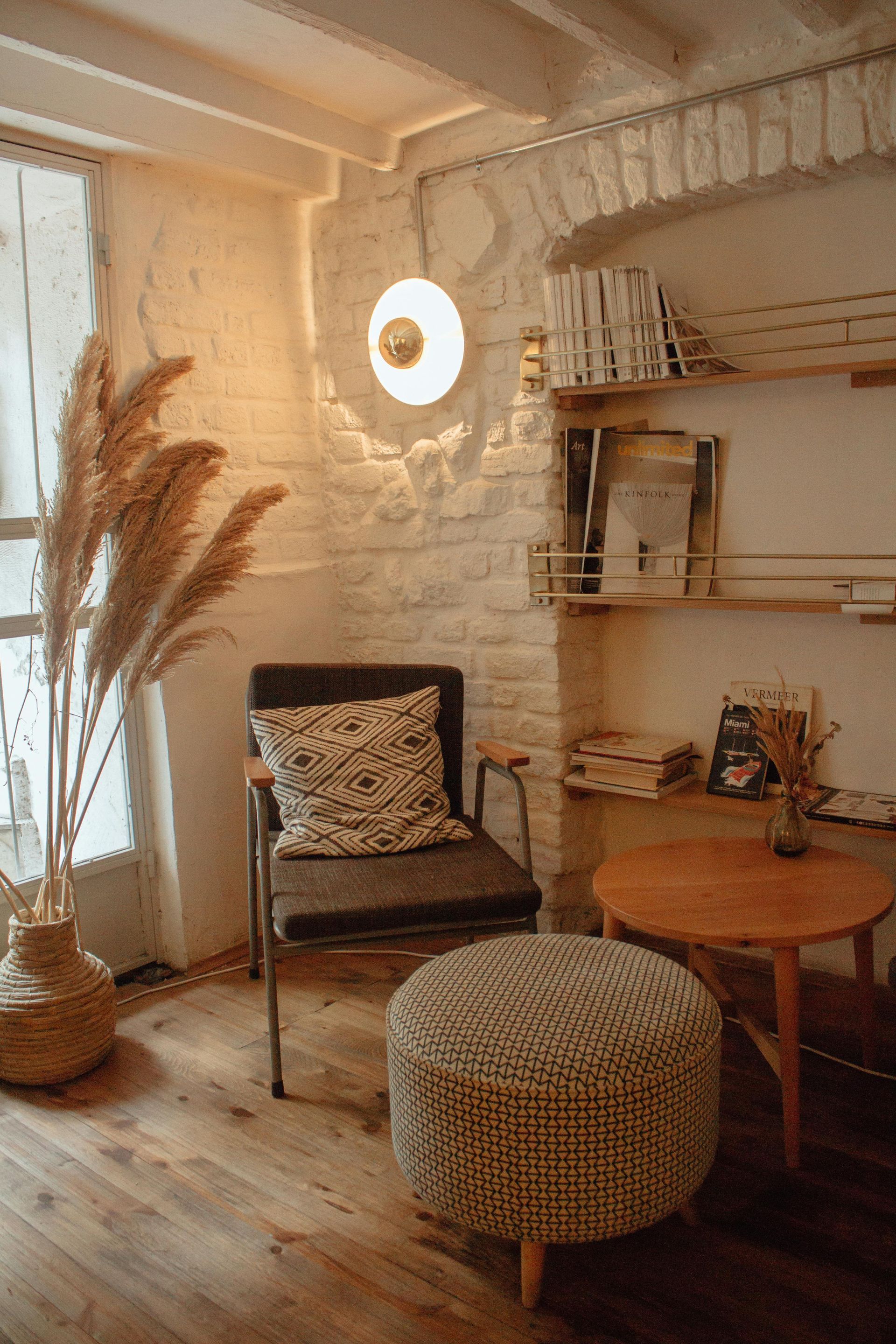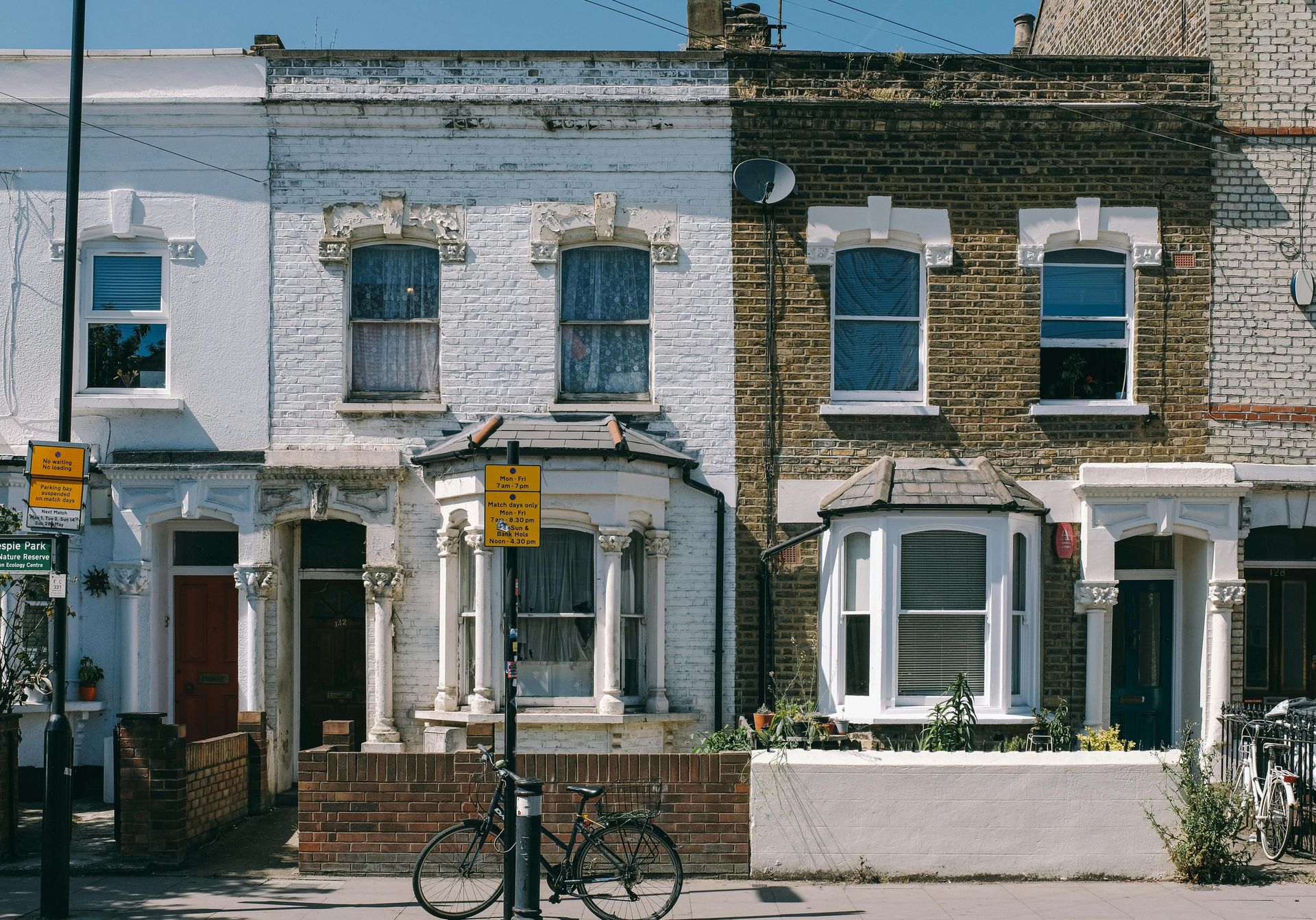London Prime Residential Property Market Update – July 2025
London’s prime residential market – the high-end, luxury housing segment in prestigious postcodes – has evolved notably in the few months since our April update. Cautious optimism at the start of 2025 has given way to clearer signals of a market finding its footing amid persistent headwinds.
Prices in Prime Central London (PCL) have softened a bit further, while Prime Outer London (POL) remains comparatively resilient. Buyer demand is still subdued but shows early signs of revival, aided by stabilising financial conditions. Meanwhile, policy changes and taxes introduced earlier in the year are still filtering through and influencing behavior on both the buy and sell side.
What’s Changed Since April?
Prices & Values:
- Prime Central London prices are down slightly more year-on-year (around -3% to -4% now, vs ~-1% in Q1), reflecting continued adjustment. In contrast, prime outer districts are flat to modestly up year-on-year (0% overall, with some areas +1–3%). PCL values now sit roughly 22% below their 2014 peak in nominal terms, marking the best value in over a decade.
🔗 For more on how high-net-worth buyers are financing luxury homes in 2025, read How to Finance Luxury Property in the UK.
Sales Activity:
- Transaction volumes remain low – the number of prime sales in H1 2025 was about 6–7% below the same period in 2024. June in particular saw 27% fewer sales than June 2024. However, buyer activity is picking up beneath the surface: properties going “under offer” rose ~9% year-on-year in June, indicating more deals are in the pipeline for Q3.
Supply & Negotiations:
- Supply has increased further. New prime listings in Q2 were ~14–19% higher annually, and total available stock is up over 13% vs last year. Many sellers have responded to slow markets by cutting asking prices – about 41% of prime properties sold in June had a prior price reduction, and the average discount to initial asking is ~8%. Serious sellers are accepting the new reality: Knight Frank reports that those who have had properties listed for 6–12 months are making double-digit price reductions to get deals done. This negotiability has put discerning buyers in a stronger position.
🔗 See Structuring Finance for a Portfolio Landlord with Trust Ownership for a case study on how structure can support flexibility in tough markets.
Policy Impact:
- Government policy moves in early 2025 have started to bite. In April, the stamp duty surcharge on second homes and investment properties was raised from 3% to 5%, which further dampened investor demand in April/May. Meanwhile, the “non-dom” tax reforms (which limit time under the old regime and impose UK inheritance tax on worldwide assets for long-term non-domiciled residents) are contributing to an exodus of some overseas owners. Prime market analysts tie the sluggish sales in central London partly to these fiscal changes, as some international investors either pause new purchases or even sell assets in light of less favorable UK tax treatment.
🔗 Explore
Inheritance Tax Planning with Whole of Life Policies for how buyers are future-proofing their assets.
Financing Environment:
- A major shift since spring is the turn in interest rate trends. The Bank of England cut rates in May (by 0.25%, to a 4.25% base rate) and then held rates steady in June. This policy pivot, reflecting easing inflation, has begun to reduce mortgage costs for high-end buyers. Lenders have started trimming mortgage rates; indeed, by early July several major banks were offering 5-year fixed deals below 4% for low-risk, affluent borrowers.
- The era of relentless rate hikes has likely peaked, and banks are now “vying for business as borrowing costs drift lower”. While prime buyers often have significant cash, the improved credit conditions (and some lenders’ willingness to stretch loan-to-income ratios for top earners) are boosting confidence for those who do require financing. (For more on securing large or complex-property mortgages in 2025’s climate, see our recent guides on High-Net-Worth Mortgages and Financing Luxury Property - https://www.willowprivatefinance.co.uk/private-client-finance-in-2025-tailored-lending-for-complex-profiles.)
🔗 Learn how lenders are adapting in
High Net Worth Mortgages in 2025.
🔗Or explore
Private Client Finance in 2025 for bespoke lending options in today’s market.
In summary, London’s prime market finished Q2 2025 on a
sluggish but stabilising note. Next, we dive deeper into the latest price trends, buyer/seller behavior, and what to expect as we head into late 2025.
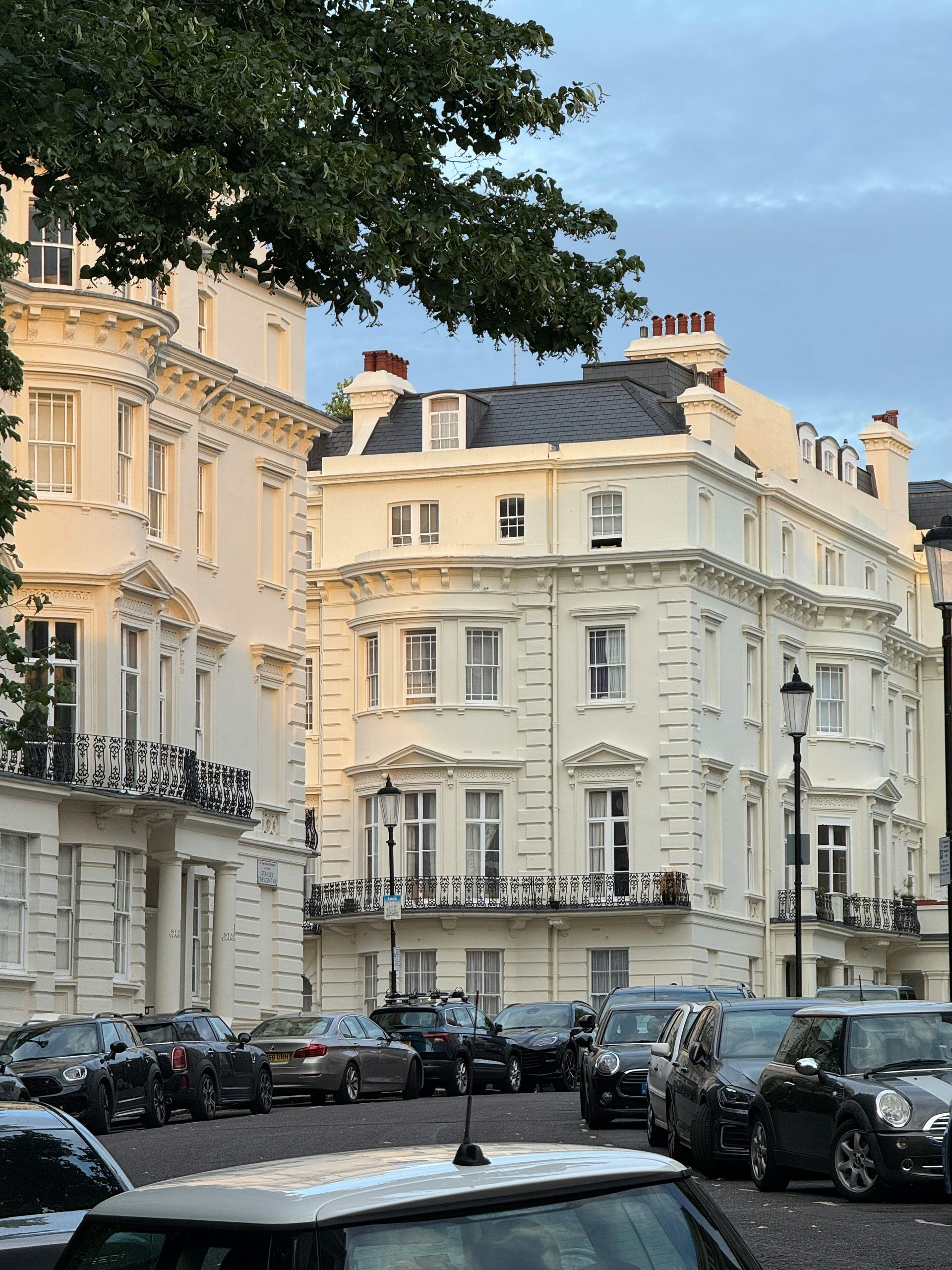
Prime Prices Bottoming Out? (Mid-2025 Trends)
Price movements in mid-2025 confirm a continued gentle correction in the priciest central postcodes, alongside relative firmness in outer-prime neighborhoods:
Prime Central London:
- Average PCL values are about 2–4% lower than a year ago (the exact figure varies by source). Savills reported annual price falls of -3.7% as of Q2. This marks an acceleration from the -1% year-on-year dip seen in Q1, and is the steepest annual drop in PCL since 2019.
- On a quarterly basis, Q2 saw PCL prices slip about -1.4% to -1.5%, the sharpest quarterly fall in several years. These declines, while notable, come after several years of stagnation and mean that prime London townhouses and flats are now priced at levels not seen since the mid-2010s (over 20% below 2014’s peak on average). There are signs this could be a market bottom: June’s values were actually slightly up from May in PCL, and the average asking-price discount narrowed in Q2 to its lowest level this year. In other words, sellers who are transacting have largely adjusted to realistic pricing, and buyers are slowly responding.
🔗 For more insight into recent buyer behavior in prime areas, see Why London’s Prime Residential Market Still Deserves Attention in 2025.
Prime Outer London:
- The high-end “leafy” suburbs and villages just outside the city center continue to outperform their Zone 1 counterparts. Outer prime prices are roughly flat year-on-year (0.0% growth) on average, with a marginal -0.5% dip in Q2 – essentially holding steady. In fact, some outer prime districts gained value over the past 12 months: for example, West London prime areas are up +0.6% YoY, and South-West London prime is up +0.5%.
- Specific neighborhoods driven by domestic family buyers saw notable growth: places like Brook Green (+1.3% YoY), Putney (+2.5%), and Wimbledon (+3.4%) all posted annual price increases through Q2. These areas benefit from offering more space, good schools, and commutability – attributes in high demand. They also have a higher proportion of UK end-user buyers (as opposed to investors), which has insulated them from some of the tax and sentiment hits affecting central London. As one example of this resilience, the traditionally “aspirational family” districts of Notting Hill and Holland Park (prime areas with more domestic end-users) have seen much smaller price falls than ultra-prime enclaves – Notting Hill was only -1.4% year-on-year in the latest data, outperforming the broader PCL average.
Rental market note:
- It’s worth mentioning that prime rents are still climbing, which is influencing some owners’ decisions. In June, prime London rents were +5.6% higher than a year prior. In fact, rents have surged so much since 2020 that they now sit 35% above pre-pandemic levels on average. This booming rental demand (partly due to frustrated would-be buyers and returning international tenants) has encouraged certain discretionary sellers to flip their properties to the letting market instead of selling at a discount.
- The result is a modest easing of the supply crunch for rentals – a 9% yearly increase in available prime rentals by mid-2025 – but it also means some sales inventory is temporarily on hold. For investors, rising rents are improving yields slightly in prime London (offering a silver lining to counter higher financing costs). Overall, the rental trend underscores that demand for London housing – to live in – remains robust, even if the form of occupancy is shifting in the short term.
🔗 For HNW clients seeking yield or capital preservation, read High Net Worth Mortgages in 2025 or Private Client Finance in 2025.
Buyer Demand & Sentiment: Cautious, But Turning a Corner
The demand side of London’s luxury market has been tepid through Q2, yet beneath the low transaction numbers there are glimmers of a rebound in confidence:
Sluggish Sales, More Buyer Hesitation:
- The first half of 2025 saw fewer homes changing hands in prime areas. Knight Frank data shows the number of prime London sales in the six months to May was 7% lower than the same period the year before.
- Would-be buyers have been cautious, taking their time amid economic uncertainties. Inquiries by new prospective buyers were also down (~13% year-on-year) in early 2025, reflecting a “wait-and-see” mindset.
- Factors like wariness over inflation/interest rates, geopolitical news, and anticipation of government tax moves have kept many wealthy buyers on the sidelines. However, importantly, demand has not disappeared – it’s delayed. There is significant “dry powder” in the form of cash-rich individuals monitoring the market. These buyers are often negotiating hard or sitting out for now, but they will strike when they sense value or policy clarity. The uptick in under-offer properties in June (up ~9% YoY) suggests some of these buyers started to nibble at opportunities as prices stabilized.
🔗 See How to Get a £5 Million+ Mortgage in 2025 for how affluent buyers are preparing.
Increasing Activity Under the Surface:
- Several forward-looking indicators hint that prime demand is gradually improving. Aside from the rise in properties under offer, LonRes market data show new buyer registrations in Q2 2025 actually edged above the pre-pandemic average – meaning more people are actively hunting than in the post-2017 baseline.
- Moreover, the ratio of sales agreed to new listings has started to improve. By mid-year, for the first time since 2022, buyer interest is high enough that it’s chipping away at the excess supply. One particularly telling stat: the average asking price discount (difference between initial asking and final sale price) in prime London narrowed to 8.2% in June, the most seller-favorable level all year.
- And only 41.5% of sold properties had a price reduction in June, down from higher levels earlier – indicating that properly priced homes will sell without needing endless cuts. All of this suggests the market may be “turning a corner,” albeit slowly.
Domestic vs. Overseas Buyers:
- A notable trend in 2025 is a shift in the buyer mix and motivations. With some foreign investors pulling back (more on that below), domestic end-users have become relatively more important, especially in PCL. Savills reports an uptick in UK-based buyers (often younger professionals in their 30s and 40s) seizing the chance to buy in prime central areas at corrected prices. These buyers are typically purchasing a main residence rather than an investment, and thus are less deterred by things like the recent inheritance tax changes (which mainly worry older or investor buyers).
- The flip side is an increase in overseas owners looking to sell – international investors and second-home owners make up a larger share of prime London sellers now than before. Many of them are reacting to the UK’s less friendly tax climate and deciding to cash out. This dynamic – overseas sellers, domestic buyers – is creating opportunities for local owner-occupiers to snap up premier addresses. As evidence, traditionally domestic-favored neighborhoods (e.g. Notting Hill, as mentioned) have been more resilient in pricing, suggesting local demand is stepping up.
🔗 For related planning strategies, see Inheritance Tax Planning with Whole of Life Policies.
Foreign Demand: Currency vs. Taxes:
- International interest in London hasn’t vanished by any means – it’s just more selective now. On one hand, the weak pound continues to offer a hefty discount for USD- and Gulf-based buyers. American and Middle Eastern buyers have been extremely active in ultra-prime deals over the past 18 months (Americans even became the #1 overseas purchaser group in PCL in 2024), and that trend is ongoing in 2025.
- We continue to see North American tech billionaires and Middle Eastern royalty hunting trophy assets, drawn by London’s stability, lifestyle and long-term growth potential. However, new tax deterrents have tempered the overall volume of foreign buyers. The abolition of long-term non-dom status (effectively after 4-5 years) means ultra-wealthy non-residents can no longer shelter international income and assets indefinitely.
- Additionally, April’s stamp duty hike (a 5% surcharge for additional property purchases) directly hits overseas buyers who often already own property elsewhere. These measures have made some investors reconsider UK purchases. In fact, countries like Italy – which offers a flat-tax regime for foreign wealthy residents – are now luring some of those who might have otherwise chosen London. Knight Frank analysis suggests these tax changes are a key reason why prime London saw such a drop in transactions year-on-year.
- The bright spot is that the foreign buyers who remain in the market tend to be ultra-motivated and less price-sensitive (e.g. U.S. buyers with a strategic or personal desire for a London base, or Middle Eastern families valuing London’s education and security). For these groups, London is still a safe-haven and a status market – and the currency play makes high-end London property look 30% cheaper to them than it did in 2014.
Buyer Psychology in 2025:
- Overall sentiment is still mixed. There’s lingering caution – memories of last year’s economic jitters and rapid rate rises are fresh. Buyers are value-conscious, often testing sellers with cheeky low offers or waiting to see if prices slip further. Yet there’s also a sense that opportunity is in the air. As one prime agent noted, many buyers’ “confidence lies just below the surface” – they just need a nudge (be it a slight mortgage rate drop, a tax clarification, or evidence that prices have bottomed) to jump in.
- Those bold enough to move now face less competition and more negotiating power than in the boom years. This dynamic has prompted “smart money” individuals to quietly start buying in mid-2025, aiming to beat the crowd. Indeed, industry insiders report that seasoned investors and wealthy families are cherry-picking prime properties at 10-20% discounts from peak, an opportunity unlikely to persist once the market clearly rebounds. In sum, buyer sentiment is cautious but on the cusp of improvement: stability is gradually returning, and with it comes the return of confidence to London’s elite property sector.
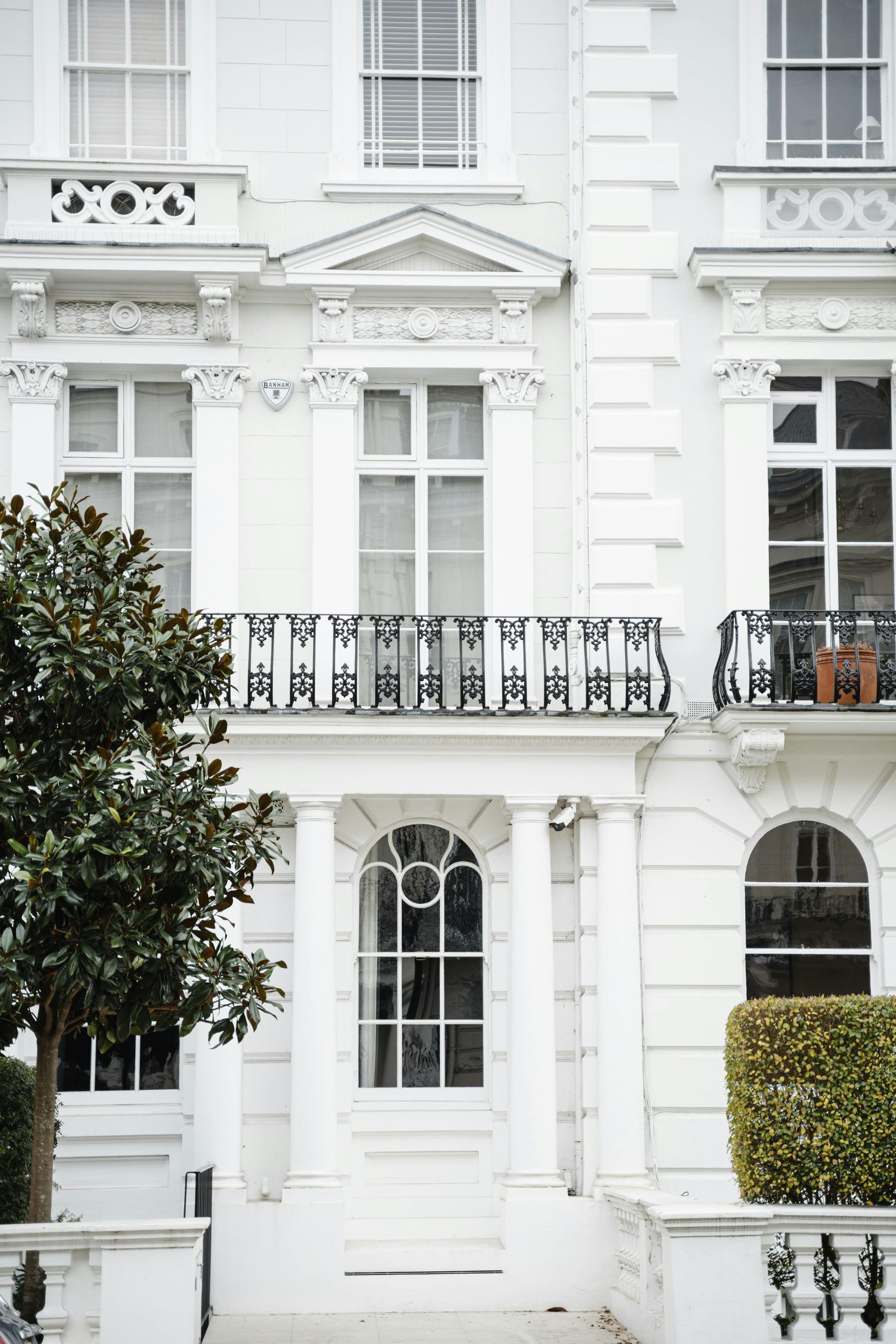
Sellers & Inventory: High Supply, Realism Kicks In
The supply side of the prime market has been a key story this year. We’re seeing more homes for sale, and a distinct split between sellers who adjust and those who resist:
Rising Inventory:
- One reason buyers have been able to be picky is that prime stock levels are elevated. By mid-2025, the number of prime London homes on the market was ~13–18% higher than a year ago. Supply has also outpaced the 2017–2019 pre-Covid norm by around 20–40%, depending on the metric. This buildup began in 2022 when rising interest rates cooled demand, and has continued as some owners rushed to list before anticipated tax changes.
- In Q2, new sale instructions jumped ~19% annually as more sellers tested the waters for a summer sale. At the very top end (£5M+ super-prime homes), supply surged even more – new listings in June were up 42% year-on-year, more than double typical levels. Simply put, buyers now have options, and the days of frenzied bidding wars on prime properties are largely behind us (for now).
“Needs-Based” vs. “Optional” Sellers:
- The composition of sellers ranges from those who need to sell (e.g. relocating, financial pressures, or settling estates) to those who are optional (would sell at the right price but can also hold or rent out). The increased rental activity we noted means some discretionary sellers have postponed selling – if they didn’t get offers they wanted, they’re renting the property until conditions improve. However, many other sellers are pushing ahead and becoming more realistic on price.
- There’s evidence of a psychological shift: by summer 2025, most prime owners and their agents have accepted that the frothy 2021 prices are gone, and that in order to sell in this climate, asking prices must align with today’s market. The average asking price on prime new listings has come down, and as noted, about half of sellers are implementing price reductions during the marketing process.
- Overpriced homes simply sit unsold (often for 6+ months) until the asking price is trimmed enough to tempt buyers. The good news is, when a prime property is priced attractively (or cut to market-clearing level), it does find buyers – sometimes quickly if it’s a one-of-a-kind home. Properties that have seen 10–15%+ price cuts from their original listing are now transacting, as value-focused buyers swoop in. This adjustment process is healthy and necessary to get the market moving again.
Developer Sales & New Builds:
- One subset of inventory worth mentioning is newly built luxury developments. Developers of prime schemes (think high-end condos and boutique apartment blocks) faced a slow patch in late 2024, leading some to enhance incentives – such as stamp duty rebates, furnishings, or financing perks – to entice buyers.
- By mid-2025, some of these new builds in prime areas have begun to move units again, especially if priced competitively relative to older second-hand stock. International buyers remain a key audience for new builds (given the turnkey appeal and amenities), but domestic downsizers are also in the mix. We’ve observed that best-in-class new developments (with top locations or unique offerings) continue to achieve strong prices, whereas more generic luxury flats have had to adjust pricing down. This two-track scenario in the new-build prime segment mirrors the broader market: trophy assets can still command interest, but anything perceived as overpriced or unremarkable will languish until value is apparent.
Ultra-Prime and Trophy Properties:
- At the very top of the market (think £10M, £20M, £50M+ estates), supply has ballooned somewhat as well – multiple marquee mansions and penthouses are quietly available. H1 2025 saw an influx of ultra-prime listings, some of them previously off-market, as certain owners decided to test buyers’ appetites. The result is that a savvy buyer in mid-2025 has perhaps the widest choice of £5M+ homes in London that we’ve seen in years.
- However, selling these ultra-prime properties remains challenging in the current climate. In the £5M+ “super-prime” bracket, completed sales in H1 were down ~10.5% versus H1 2024. Many ultra-rich buyers are biding their time, which means several high-profile properties have sat on the market without takers, or changed brokers, etc. Notably, asking prices at the extreme high end have proven very aspirational – we’ve witnessed examples of £30M listings slashed to £25M, or £100M mansions quietly seeking offers in the £70–80M range.
- When ultra-prime deals do happen, they tend to be at a significant discount to initial price hopes. A famous example from late 2024 was “The Holme” in Regent’s Park selling for ~£139M after originally seeking £250M – illustrating how even trophy assets have reset in value. In 2025 so far, no deals of that magnitude have closed (the latter half of 2024 was unusually active for mega-deals), but several £20M+ transactions are reportedly in solicitors’ hands as buyers and sellers find middle ground.
- Overall, high supply and lower demand = a buyer’s market in prime London right now, and sellers who acknowledge that are the ones getting deals done.
Related reading:
- How to Finance Luxury Property in the UK: A 2025 Guide for HNW Buyers
- Private Bank Mortgages Explained: Benefits and Drawbacks
- High Net Worth Mortgages in 2025: What Lenders Look for Beyond Income
Area Highlights: From Golden Postcodes to Emerging Hotspots
London’s prime market is far from uniform – performance and activity vary greatly by area and price-bracket. Some quick highlights as of mid-2025:
Traditional PCL “Golden” Postcodes:
- Ultra-prime central neighborhoods like Knightsbridge, Belgravia, Mayfair, Chelsea, and South Kensington – long the bastions of overseas wealth – have been among the softest markets recently. These areas saw values slide further in late 2024 and early 2025 (e.g. quarterly falls of 1.5–2% in Q4 for Knightsbridge/Belgravia) and have struggled with oversupply. Buyer demand here is heavily international and thus more impacted by the tax changes.
- These districts are also expensive even after the recent declines, so buyers are extremely price-sensitive. In Q2 we saw relatively few sales in these enclaves; many owners prefer to wait rather than sell 20% below peak.
- However, this very lull could sow the seeds of a comeback – a number of well-priced super-prime deals are reportedly in negotiation in central London right now, as opportunistic buyers take advantage of the quieter competition. Knight Frank even noted an increase in interest for £10M+ homes recently, hinting that a new wave of ultra-wealthy buyers (possibly from the U.S. and Middle East) are looking to step in while prices are at a nadir.
(See: How International Buyers Are Leveraging Private Banking Relationships to Finance UK Property in 2025)
Prime North and West London:
- Areas such as St. John’s Wood, Hampstead, Notting Hill, Holland Park, Kensington (the family house pockets), and West Chelsea have been relatively resilient. They benefit from a mix of international and domestic buyers, and in 2025 the domestic side (families, professionals) has propped up demand.
- For instance, Notting Hill’s -1.4% YoY price change is far better than the -3.7% PCL averages. Hampstead and St. John’s Wood continue to attract buyers seeking large homes and gardens within reach of central London; these sub-markets are seeing steady inquiries and occasional bidding on standout properties.
- In Regent’s Park and Marylebone, where inventory of large homes is slim, any well-priced listing still garners interest. There’s a sense that quality properties in prime North/West London are holding their value, especially if they tick the boxes (turnkey condition, off-street parking, etc.). This ties into the return-to-office trend – with people back in offices more, the classic affluent neighborhoods with easy City/West End access are back in favor (Savills noted that the revival of office-centric work culture has helped outer prime areas on the west/southwest side maintain demand).
(See: How Successful Business Owners Are Financing Prime Property in 2025)
Prime Southwest “Family” Belt: South West London
- (SW postcodes) is one of the bright spots of the prime market in 2025. As mentioned, values are slightly up year-on-year in several SW locales. Areas like Wimbledon, Richmond, Putney, Wandsworth, and Barnes are buzzing with activity. These neighborhoods offer that rare combination of large homes, green space, top schools, and a sense of community – basically, everything upsizing families and relocated wealthy buyers want post-pandemic.
- They also have benefitted from some buyers shifting outwards from PCL in search of better value. For example, £5–£10M in prime SW London can buy a substantial detached house with a garden, whereas in Mayfair it might only fetch a flat. The popularity of this region is evidenced by high sale agreed rates: recent data reported by The Times show that 38.9% of prime homes in Richmond are currently under offer, and fully one-third of all £10M+ listings in Wimbledon have found buyers – remarkably strong ratios in a slow market.
- In fact, Wimbledon just saw a record sale: an off-market £12 million transaction for a 9,000 sq ft turnkey mansion, the area’s highest-value sale year-to-date. That home was snapped up by a local family upsizing within SW London, underscoring how much demand there is for best-in-class homes in these village-like environs.
- SW London prime appears to be bucking the wider slowdown, with some agents describing it as “buoyant despite the broader slump”. It seems the “race for space” trend that began in lockdown hasn’t completely faded – affluent buyers are still gravitating to leafy, spacious suburbs, keeping this segment of the market relatively lively.
(See: How to Finance Luxury Property in the UK: A 2025 Guide for HNW Buyers)
City Fringe & Emerging Prime:
- Interestingly, a few emerging prime locations just on the fringes of central London have also performed well. Back in our April report we noted pockets of Inner East London (like parts of Hackney or Shoreditch) showing price gains. That continues in 2025: areas undergoing gentrification or boasting new luxury developments (think King’s Cross, Islington, Shoreditch) are attracting wealthier younger buyers, which pushes prices up even as traditional PCL softens.
- In Q2, we hear that King’s Cross & Islington hit a record high in average £/sq ft achieved – indicating those who might have bought in Knightsbridge a decade ago are open to these trendier locales now. The draw is often modern amenities, tech industry proximity, and a different vibe than old-school London. It’s a reminder that “prime” is a moving target: as London evolves, so do the areas considered prime. For now, the core prime market may be subdued, but a few edgier neighborhoods continue to ascend as luxury hotspots in their own right.
(See: Second Charge vs. Further Advance: Which Is Better in 2025? – relevant for buyers in transition areas financing improvements)
Prime Commuter Zones:
- While our focus is London, it’s worth noting that some wealthy buyers in 2025 are also eyeing prime country and commuter belt areas as an alternative. With flexible work, some are choosing a mansion in Surrey or Oxfordshire over a townhouse in Chelsea. This has kept prices robust in prime regional markets.
- However, many of those who left London in 2020-22 are now returning or at least keeping a London pied-à-terre, which supports demand for prime flats in central locations. The net effect is a more balanced picture – London’s loss has not been severe, and outer London in particular has captured a lot of those upsizing moves that might have gone to the Home Counties otherwise.
(See: Private Client Finance in 2025: Tailored Lending for Complex Profiles)
In essence, location and property type matter greatly in this market. The best family houses in great neighborhoods are still sought-after and even achieving price growth, while generic luxury apartments or ultra-expensive central homes are more likely to languish unless priced keenly. Prime London has always been a collection of micro-markets, and 2025 has amplified that reality.
Notable Prime Sales & Listings (Spring–Summer 2025)
Despite the overall slow turnover, London’s luxury market continues to see headline-grabbing deals and interesting offerings. Here are a few notable sales and listings reported since our last update, illustrating market currents:
Wimbledon Village Estate – Sold ~£12 Million (Spring 2025):
- In an off-market deal, a 6-bedroom, 9,000 sq ft newly refurbished mansion on a half-acre plot in Wimbledon Village changed hands for approximately £12 million. This transaction, orchestrated by a Sotheby’s broker, is the highest-value sale in Wimbledon year-to-date and was purchased by a local high-net-worth family upsizing within SW London. The property’s swift sale (before it even formally launched) highlights the strength of demand in prime SW London for turn-key, spacious family homes. It also reflects the trend of wealthy buyers trading the hustle of central London for a greener, community-oriented lifestyle – without sacrificing luxury.
(See: High Net Worth Mortgages in 2025: What Lenders Look for Beyond Income)
Off-Market Super-Prime Sales:
- Several ultra-prime properties have quietly found buyers at adjusted prices. Market chatter suggests that in Belgravia, a large mansion originally priced around £40M finally went under offer after the asking was trimmed into the low £30Ms – a sign that even at the top, deals can happen once sellers get realistic.
- Similarly, a Penthouse in Mayfair that had been on the market since 2023 saw a deal agreed this June after the seller accepted an offer roughly 15% below the initial ask. While confidentiality surrounds many of these deals, the common thread is price flexibility: ultra-wealthy buyers are negotiating hard, and those sellers who concede on price are the ones writing contracts.
Notable Listings:
- On the market, one of the most watched listings is a £75 million penthouse in a new Knightsbridge development, touted as “one of London’s finest apartments”. It has drawn interest from a couple of international billionaires, though no sale yet – perhaps a barometer of the ultra-prime appetite.
- In Regent’s Park, a historic mansion that failed to sell in 2024 at £60M is now guiding £50M and reportedly seeing increased inquiries post-price-cut.
- And in St. John’s Wood, an American owner has put a contemporary megahome up for ~£35M, testing the market. The proliferation of such luxury listings – often with eye-watering price tags – means buyers in this echelon have plenty to choose from (and leverage to make low bids). It will be interesting to see, as 2025 progresses, how many of these trophy homes actually find takers. Our expectation: only those priced to align with the new market reality will trade; others may be withdrawn or left waiting for brighter days.
(See: Development Finance in 2025: What’s Changed and What Lenders Want Now)
Celebrity and International Buyers:
- High-profile names always add spice to prime London transactions. In late 2024 we saw designer Tom Ford grab an £80M Chelsea mansion, and former Google CEO Eric Schmidt purchase a £42M home in Kensington – signaling U.S. ultra-rich interest.
- Thus far in 2025, no deals of that celebrity caliber have been publicised, but there are rumors (unconfirmed) of a prominent tech figurehouse hunting in Hampstead and a Middle Eastern royal family quietly acquiring a portfolio of Kensington apartments.
- Americans, buoyed by the strong dollar, remain very active: they accounted for an estimated one-in-ten prime London home purchases by overseas buyers last year, and 2025 looks on track for similar or higher share. The ongoing influx of U.S. and other foreign wealth, even if smaller than a few years ago, continues to underscore London’s appeal. Every time a marquee sale occurs – be it a record Wimbledon house or a mega-mansion at a “bargain” £100M – it reinforces that London’s allure for the global elite is intact, even amid temporary market lulls.
(See: How Foreign Currency Income & Liquidity-Based Lending Are Reshaping UK Mortgage Approvals in 2025)
Outlook for Late 2025: Cautious Optimism
Looking ahead to the remainder of 2025, the consensus among property experts is for a gradual stabilisation in London’s prime market, with potential for a modest uptick by year-end – tempered by plenty of caution. Here’s what we expect:
Economic & Rate Environment:
- The macro backdrop is set to become mildly more favorable for real estate. Inflation in the UK has been trending down, and as noted, the Bank of England has shifted from hiking to cutting mode in mid-2025. Markets anticipate a couple more quarter-point rate cuts by year-end, which could bring the base rate down to ~3.75%.
- If those forecasts hold, mortgage financing will continue to get cheaper and credit more accessible – a tailwind for buyer confidence. Already, lower swap rates are enabling lenders to loosen up criteria and reduce rates (we’ve even seen a “mortgage price war” with lenders competing to offer sub-4% deals). By late 2025, high-net-worth buyers who needed large loans may find the cost of borrowing noticeably lower than it was a year prior. This could spur some who were priced out by 5-6% interest rates to re-engage if mortgages return to ~3-4%.
(See: Is It Time to Remortgage? Signs to Watch)
Policy Wildcards – Autumn Budget:
- A big question mark is the UK government’s stance in the upcoming Autumn 2025 Budget (expected late October/November). After implementing several high-end property tax measures (e.g. the non-dom changes and higher stamp duties), there is political pressure to avoid any further hits that could scare off investors.
- In fact, there are rumors of a possible softening: recently it was reported that the Treasury is considering reversing the extension of inheritance tax to overseas assets of non-doms (perhaps in response to evidence of wealthy foreigners leaving).
- Whether this materialises is uncertain, but it signals that policymakers are aware they may have over-tightened the screws on prime property. Any surprise tax increases in the Budget would be a downside risk, potentially prolonging buyer caution. Conversely, even a small concession or just no new taxes on property could relieve some overhang and encourage buyers who were waiting to see what happens. As Knight Frank put it, the key question is whether the Chancellor will “interrupt the process of a market that is re-pricing and getting back on its feet” or let it be.
- The political calculus is complex, but given an upcoming election, the government might aim to steady the ship and avoid further dampening of the prime housing market. We will be watching the Budget closely; in the meantime, expect prime buyers and sellers to remain cautious into the autumn until that uncertainty clears.
(See: Inheritance Tax Planning with Whole of Life Policies)
Market Trajectory:
- Most analysts foresee flat to modest growth for prime London values in the next 6-12 months. After the ~3-4% price declines in PCL this year, the base case is that prices will bottom out by autumn and potentially tick up a few percent in late 2025/early 2026 as confidence returns.
- Knight Frank had initially forecast +2% for PCL in 2025 (revised down from +3% after last year’s Budget), but given the weak first half, they’ve tempered expectations – some now say PCL might end the year around 0% (flat) or only slightly positive.
- Savills was more bearish, predicting around -4% for PCL in 2025, and they seem to maintain that cautious view mid-year (indeed Q2’s numbers are aligning with a small annual decline). They do, however, remain bullish medium-term – projecting prime London will bounce back strongly by 2027–2029 once the current challenges abate.
- For outer prime, forecasts are generally for roughly 0% change in 2025 (which so far is exactly what we’re seeing), followed by mid-single-digit growth in subsequent years. The overarching narrative is “2025 = consolidation, 2026+ = recovery.” Barring any major shocks, late 2025 could see sentiment improve as people digest that interest rates are on a downward path and that London’s luxury market has over-corrected in value.
(See: The Ultimate Guide to Property Finance in the UK (2025 Edition))
Buyer Opportunities:
- In the near term, it remains a buyer’s market, and savvy purchasers know it. We expect a number of strategic buyers (both domestic and international) to take advantage of the summer/autumn window to secure prime assets while competition is thin.
- As one agent noted, “astute purchasers have a window of opportunity to secure prime London homes in a less competitive marketplace”. This window may start to close in 2026 if global conditions stabilise and more buyers return. Already, we’re hearing of bidding on certain well-priced houses – a reminder that the best deals won’t last forever.
- For sellers, those who need to sell in the next 6 months would do well to price realistically now, because there’s no guarantee of a sudden surge in values before year-end. However, sellers with flexibility might see better days in 2026; if you can hold off and the forecasts prove right, the odds of achieving a higher price improve a year or two out.
London’s Long-Term Fundamentals:
- Perhaps the most important point in our outlook is that London still holds its long-term investment appeal. The fundamental drivers – a global city with political stability, a timezone and language conducive to international business, an attractive lifestyle and education hub, and critically, a finite supply of prime property in the best areas – remain unchanged.
- This means that while cycles occur (and we’re in a down-cycle now), the world’s wealthy inevitably return to London real estate as a store of value and a prestige asset. We’ve seen it time and again: after dips, prime London rebounds. The timing and speed can vary, but both Knight Frank and Savills project healthy cumulative growth through 2029 (on the order of +9% to +15% over five years). For buyers with a multi-year horizon, the current low ebb in prices could prove to be an excellent entry point.
(See: High Net Worth Mortgages in 2025: What Lenders Look for Beyond Income)
Potential Upside Scenarios:
- A few things could accelerate the prime market’s recovery. If interest rates fall faster than expected (say inflation plunges and BoE cuts aggressively), the increased affordability could spur a mini “release of pent-up demand” – we know many buyers have been postponing moves, so cheaper mortgages might bring them out en masse.
- Also, if the global economy avoids any new crises and stock markets continue to perform, HNW confidence will grow, benefitting luxury property purchases. Another upside wildcard is currency moves: the pound is fairly weak; should it weaken further, foreign buyers could flood in for bargains. Finally, any reversal of punitive taxes (e.g. if the non-dom IHT rules were scrapped or stamp duty reduced) would likely cause a flurry of activity as investors rush in ahead of any future policy changes. These are not base-case expectations, but they are plausible scenarios that could tilt the market to an earlier recovery.
(See: Can You Get a UK Mortgage While Living Abroad?)
Risks:
- On the flip side, risks include: a resurgence of inflation forcing rates back up (would hit sentiment and budgets), a sharp economic downturn or financial crisis (always a possibility in today’s volatile world), or adverse political developments (e.g. an unexpectedly harsh housing policy announcement, or global tensions that shake wealthy investors’ confidence). For now, many of those risks have receded compared to a year ago – inflation is easing, and the UK political environment is relatively clearer post-election – but they haven’t disappeared entirely. Hence the prevailing mood is sober optimism rather than exuberance.
Bottom Line
As we move into late 2025, expect the prime London property market to show more signs of life. Gradually, volume of sales should improve (we’re already seeing under-offer counts up), and by the winter we may even see price indices flatten or tick up after a year of declines. It won’t be a sudden boom – more like a gentle turning of the tide.
Both buyers and sellers will likely remain price-sensitive and strategic, with an eye on economic signals and the October Budget. But the worst of the downturn appears to be behind us, and London’s prime segment is poised for a new chapter of recovery. As always, those who stay informed and think long-term will be best positioned to capitalize on the opportunities in this unique market.
Need guidance on navigating the financing a complex prime purchase?
Willow Private Finance specialises in bespoke mortgage advice for high-net-worth and international clients.
Whether it’s leveraging private bank mortgages for a luxury home, using bridging finance to secure a property quickly, or structuring your purchase via a company or trust, our experts can help tailor a solution.
The prime market may be complex, but with the right strategy – and the right broker – you can make the most of it, whether you’re buying, selling, or refinancing in 2025.
Important: Your home or property may be repossessed if you do not keep up repayments on a mortgage or any other loan secured against it. Think carefully before securing other debts against your home. Some buy-to-let, commercial, and bridging loans are not regulated by the Financial Conduct Authority. Equity release may involve a lifetime mortgage or home reversion plan—ask for a personalised illustration to understand the features and risks. The content of this article is for general information only and does not constitute financial or legal advice. Please seek advice tailored to your individual circumstances before making any decisions.
Article Sources
📊 Price & Market Data
- Savills – Prime property prices fall as buyers gain more choice
Prime Central London down 3.7% YoY; outer prime flat to -0.5% Q2 2025 Knight Frank+1Knight Frank+1Savills US+6The Intermediary+6Reddit+6 - Savills – Buyers take advantage of lower values across prime housing markets
Reports PCL prices ~21% below 2014 peak Knight Frank+5Savills+5Reddit+5 - Knight Frank – Prime Central London Sellers Cut Prices to Attract Buyers
PCL down ~2.2% YoY to May 2025; under-offer activity rising; non-dom tax changes noted The Times+15Knight Frank UK+15Savills+15
📈 Transaction & Sales Activity
- Knight Frank – Prime London Sales Index (May & H1 2025 data)
Covers volume declines, under‑offer trends, and buyer hesitation Knight Frank+2Knight Frank UK+2Knight Frank UK+2Savills US+9Reuters+9
🏠 Rental Market & Supply
- FT – Why is top-tier renting on the rise in London?
Super-prime rentals +9% in six months, driven by flexibility and tax considerations Knight Frank+15Financial Times+15Financial Times+15
🏡 Ultra-Prime Sales & Listings
- FT – Super-prime and the rise of 'try before you buy'
Trend of high-value rentals with purchase options in Mayfair, Kensington, Knightsbridge Financial Times
🧭 Office Demand & Commute Patterns
- Reuters – Return-to-office mandates fuel hopes of London property market revival
Office occupancy rising, bolstering demand for prime residential locations Reuters



